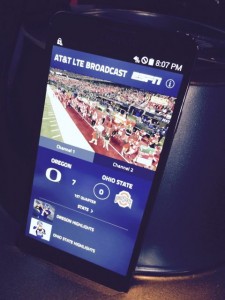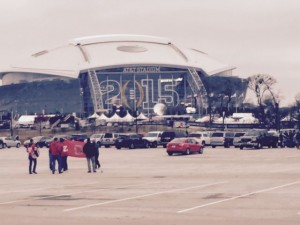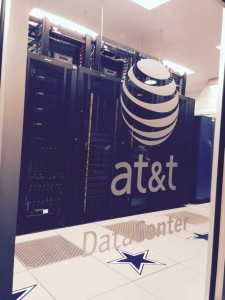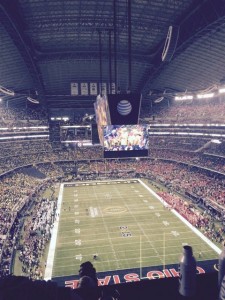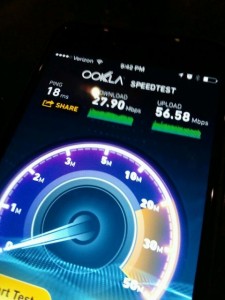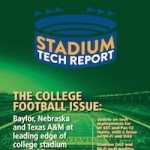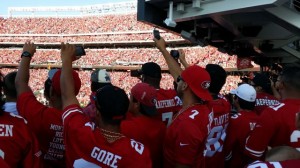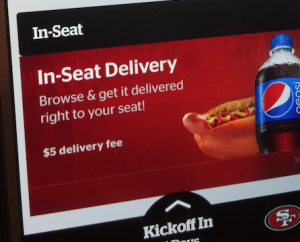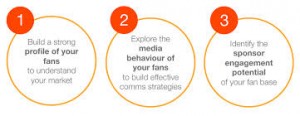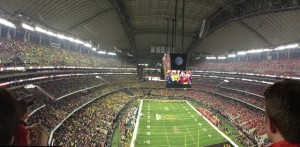
Inside AT&T Stadium at the College Football Championship game. Credit all photos: Paul Kapustka, MSR
We’ll have a more thorough stadium report when we get time to digest all the info we gathered at the game (and get the network stats back from the AT&T Stadium tech crew) but one thing we learned before the game was that since November, the Wi-Fi network at AT&T Stadium grew by more than 280 access points, on top of a total somewhere in the 1,200 range. According to AT&T network folks the stadium here in Arlington, Texas, has been seeing game-day totals of 3.3 Terabytes of data carried on the Wi-Fi network — leading some here to believe that Monday’s championship game could well surpass 4 TB of data used at a single game, an unofficial record as far we know for a single-day, single facility network.
As guests of AT&T we also got a quick demonstration of LTE broadcast technology, which basically slices the available cellular spectrum into a channel that can provide live streams of video. We’ll have more on this new technology in another separate report, but it is something to watch for facilities that want video options but don’t want to go whole hog on Wi-Fi.
Even though we were housed in a field-level suite your intrepid MSR crew wandered all over the massive facility, and basically found great connectivity wherever we were. Two places stick out in my mind: At the very top of the nosebleed section in the south end zone the Wi-Fi dipped to just 1 Mbps, probably because the roof is so high there is no place for an access point. However, at that same spot the AT&T 4G LTE signal was around 7 Mbps, providing great connectivity in a tough to configure spot.The other notable spot was in a “star level” suite (about the 6th level of the building), where we got a Wi-Fi signal of 28 Mbps download and 59 (no typo!) Mbps on the upload. Yes, suite people have it better but all around wherever we went we got consistent Wi-Fi signals in the high teens or low 20s, and LTE cellular signals (including Verizon 4G LTE) just under 10 Mbps. Like the Ohio State offense, the network at AT&T Stadium works really well and may have set a new record Monday night. More soon, and more images soon as well. For now, Elvis has left the building.
Ohio State Elvis is in the house #attstadium #cfbchampionsjip pic.twitter.com/alDLti4mJC
— paulkaps (@paulkaps) January 13, 2015
